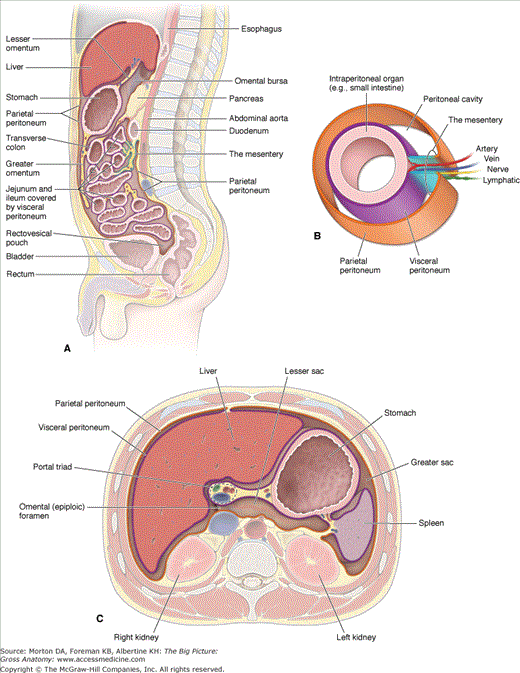Peritoneum
The abdominopelvic cavity is lined with a serous membrane called the peritoneum. This membrane expands from the internal surface of the abdominal wall to completely or partially surround organs of the abdominopelvic cavities.
The peritoneum is a serous membrane that consists of two layers: parietal peritoneum and visceral peritoneum (Figure 8-1A–C). The parietal peritoneum lines the internal walls of the abdominal cavity, forming a closed sac known as the peritoneal cavity. The peritoneal cavity is completely closed in males. In females, the peritoneal cavity has two openings where the uterine tubes, uterus, and vagina provide a passage to the outside. The parietal peritoneum reflects off of the posterior abdominal wall, forming a fused, double layer of peritoneum surrounding the blood vessels, nerves, and lymphatics to abdominal organs. This double layer of peritoneum, known as the mesentery, suspends the jejunum and ileum from the posterior abdominal wall. The peritoneum that surrounds the gut tube is called the visceral peritoneum. The peritoneal membranes produce a serous fluid that lubricates the peritoneal surfaces, enabling the intraperitoneal organs to slide across one another with minimal friction.
Stay updated, free articles. Join our Telegram channel

Full access? Get Clinical Tree



